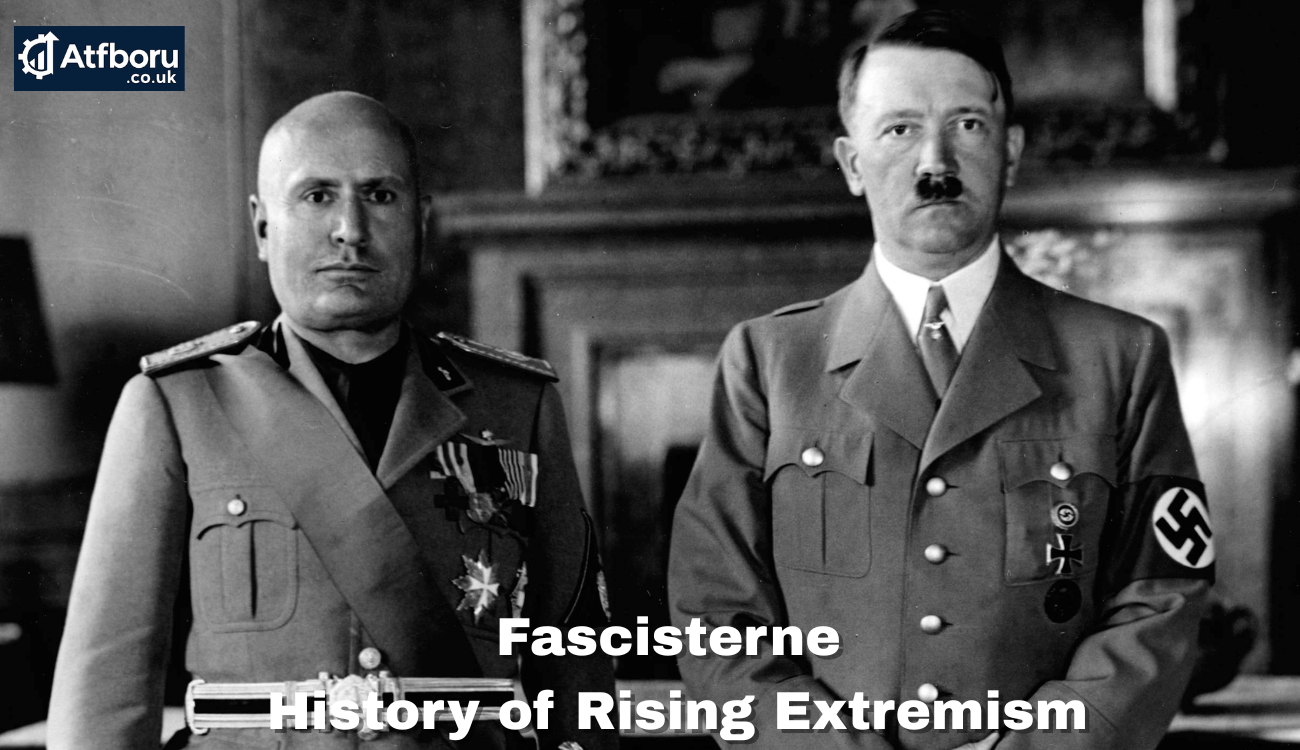Fascisterne—a Danish term tied to fascist movements—requires exploring its roots in European political history, the violent rise of far-right extremism, and the lingering threats that persist in modern politics. From its origins in interwar Europe to its digital-age resurgence, Fascisterne represents an ideology built on authoritarian rule, racial hierarchy, and militaristic expansion, leaving behind a legacy that continues to shape global debates today.
Fascisterne: Origin, Meaning & Context
The word Fascisterne translates roughly to “the fascists,” referencing the leaders, supporters, and systems behind fascist ideology. Emerging after the World War I aftermath, these ultranationalist movements capitalized on political unrest, economic collapse, and national humiliation—particularly the punitive conditions imposed on Germany through the Versailles Treaty.
Fascisterne is not just a political label; it symbolizes a broader structure of dictatorship, centralized power, and state-controlled economies, often framed as necessary answers to societal crises. In practice, however, it consistently led to repression, violence, and catastrophic war.
Historical Emergence of Fascisterne in Europe
Fascist movements gained traction during the volatile decades following World War I. In Italy, Benito Mussolini founded the Fasci di Combattimento, launching the infamous March on Rome that established Europe’s first modern fascist state. Shortly after, Adolf Hitler and the Nazi Party in Germany capitalized on soaring inflation, unemployment, and anti-communist rhetoric to transform the nation into Nazi Germany, a model of totalitarian regimes.
Other leaders followed similar paths:
• Francisco Franco in Spain,
• Miklós Horthy in Hungary,
• The Iron Guard in Romania,
• Oswald Mosley and the British Union of Fascists in Britain.
Each adapted the core ideology to local grievances, but all operated within the same ecosystem of extremist ideologies, ethnic nationalism, and political manipulation.
Core Ideology of Fascisterne
At its foundation, Fascisterne embraced a worldview centered on:
- Ultranationalism and glorification of national identity
- Rejection of liberal democracy and anti-liberal sentiment
- Fierce anti-communist rhetoric
- A hierarchical vision of society founded on ethnic nationalism and racial purity
- Submission of the individual to the collective, militarized state
- A corporatist state overseeing a regulated, state-controlled economy
This ideology defined a rigid racial hierarchy, enabling regimes to justify genocide policies, violent suppression, and forced expansion.
Fascisterne Tactics & Mechanisms of Power
Fascist regimes mastered techniques that allowed them to secure and maintain dominance, including:
- Mass mobilization of youth through indoctrination and youth movements
- Strict suppression of dissent and elimination of political opposition
- Construction of sophisticated propaganda systems
- Militarization of society and strategic use of fear
- Cultivation of leader worship to strengthen centralized, unchallenged authority.
Such tactics created an environment where questioning the state became a punishable crime.
The Societal Impact of Fascisterne Rule
Life under Fascisterne was marked by aggressive social engineering and pervasive control. Citizens experienced:
- Loss of civil liberties
- Limited cultural and intellectual freedom
- Forced conformity to nationalist narratives
- Persecution of minorities, especially under regimes like Nazi Germany
- Economic restructuring was designed to fuel imperial ambitions and militaristic expansion.
Fascisterne in Occupied Denmark: A Closer Look
During World War II, Germany occupied Denmark, bringing Fascisterne influence directly into Danish society. Although Denmark initially attempted a cooperative arrangement, the German push for stronger ideological alignment intensified over time.
Danish fascist groups—though never as powerful as their counterparts in Italy or Germany—collaborated with occupiers, promoted anti-communist sentiment, and supported Nazi goals. The occupation period remains a complex chapter in Denmark’s national memory, reflecting themes of resistance, collaboration, and survival.
Propaganda & Media Control in Fascisterne Movements
A hallmark of fascist governance was absolute control of information. The regimes constructed powerful propaganda systems that:
- Amplified nationalist ideals
- Discredited enemies, especially communists, liberals, and ethnic minorities
- Spread extremist ideologies
- Manipulated public perception through newspapers, radio, film, and educational materials
- Encouraged loyalty to leaders like Mussolini and Hitler
Propaganda did not simply inform; it reshaped reality to justify oppression.
Consequences of Fascisterne Rule on Human Rights
Under Fascisterne, human rights were systematically dismantled. Victims endured:
- Arbitrary arrests and torture
- Forced labor
- Ethnic cleansing and genocide, most infamously the Holocaust
- Abuse of political prisoners
- Erasure of religious, cultural, and ethnic identities
These violations underscore the dangers inherent in totalitarian regimes built on racial supremacy and domination.
The Fall of Fascisterne & Post-War Reckoning
Fascist regimes crumbled during World War II, overwhelmed by military defeat and internal collapse. Nazi Germany, Italy, and their allies faced occupation, war crimes trials, and sweeping political reforms.
The post-war period saw efforts to denazify society, prosecute leaders, and rebuild democratic institutions. Yet the ideological remnants of Fascisterne lingered, requiring continuous vigilance.
Fascisterne Echoes in Modern Politics
Although classical fascism fell in 1945, its echoes resonate today. Some political movements weaponize:
- Nationalism and identity politics
- Anti-immigrant sentiment
- Cultural grievance
- Conspiracy narratives
- Attacks on democratic institutions
These patterns resemble the early stages of fascist rise to power in the 20th century, showing how easily societies can regress during times of uncertainty.
Fascisterne: Online Radicalization & Disinformation
The digital era has created new avenues for radicalization. Online spaces enable:
- Rapid spread of disinformation
- Recruitment into far-right extremism
- Revival of extremist symbols
- Global networking of ultranationalist groups
- Sophisticated psychological manipulation similar to early propaganda
What once required state-run propaganda machines can now be achieved through social media algorithms and anonymous networks.
Lessons from History in Preventing Fascism’s Return
To prevent the resurgence of Fascisterne, societies must commit to:
- Protecting democratic institutions
- Promoting historical literacy about European political history
- Countering disinformation
- Strengthening social cohesion
- Addressing economic inequality and political polarization
- Supporting free press and independent media
History demonstrates that crises create opportunities for authoritarian movements—but awareness, education, and vigilance can stop their return.
Conclusion
Fascisterne represents one of the darkest chapters in Europe’s past, shaped by totalitarian regimes, ultranationalist fervor, and devastating wars. By understanding its origins, ideology, and impact—from Mussolini and Hitler to the influence on Denmark—we gain insight into how extremism grows and how it can be prevented. In an age of online radicalization and rising global tension, remembering the lessons of Fascisterne is not only an academic exercise—it’s a democratic necessity.
FAQs
What does the term Fascisterne mean?
Fascisterne refers to fascist groups or regimes, especially in historical European contexts.
How did Fascisterne rise to power in Europe?
They exploited economic collapse, political unrest, and national humiliation after World War I.
What ideology defines Fascisterne movements?
Their ideology centers on ultranationalism, authoritarian rule, and suppression of dissent.
Which countries were most influenced by Fascisterne?
Italy, Germany, Spain, Hungary, Romania, and parts of Britain saw major fascist activity.
What human rights abuses occurred under Fascisterne?
Fascist regimes engaged in mass persecution, racial hierarchy policies, and genocide.
Do Fascist ideologies appear in modern politics?
Yes, far-right extremism and digital radicalization echo historical fascist patterns.

